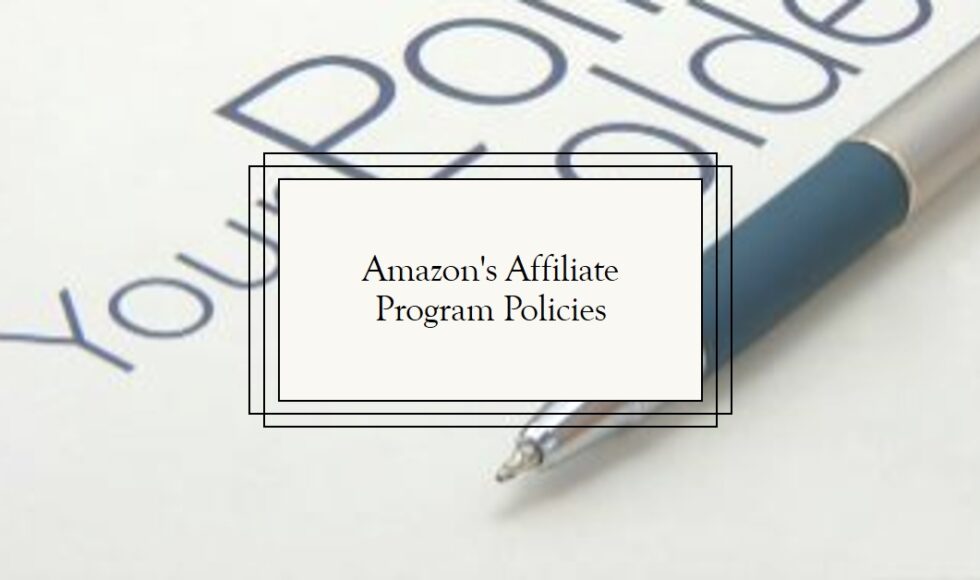Have you ever felt like you were searching for a hidden key to unlock a treasure trove of opportunities? Well, that’s exactly how it can feel when trying to navigate Amazon’s affiliate program. With its vast array of rules and regulations, it can seem like a mysterious labyrinth that only a chosen few can navigate successfully.
But fear not! In this discussion, we will shed light on the secrets of Amazon’s affiliate program and help you unlock the door to a world of potential earnings.
So, if you’re ready to uncover the mysteries and discover the path to affiliate success, join us as we unravel the intricacies of Amazon’s affiliate program.
Disclosure and Compliance
Ensure compliance with FTC requirements and Amazon’s legal obligations by using a clear and prominent disclaimer and disclosure statement to identify yourself as an affiliate. It’s crucial to be transparent and honest with your audience about your affiliate status.
By including the provided text in Amazon’s operating agreement on your platform and placing the disclosure notice at the top of the article or page with affiliate links, you demonstrate your commitment to compliance. Use plain language to inform readers about your affiliate status, avoiding any confusion or misinterpretation.
This level of disclosure not only fulfills legal obligations but also builds trust and credibility with your audience. Remember, safety-conscious individuals value transparency, and a clear disclosure statement is an essential step towards meeting their expectations.
Link Usage
To effectively comply with FTC requirements and ensure transparency, it’s essential to understand the guidelines and best practices for link usage in Amazon’s affiliate program.
When using affiliate links, avoid using link shorteners or hiding and disguising the links. Always use unmasked URLs to maintain transparency.
Place affiliate links on your website, YouTube channel, or public Facebook page, but refrain from putting them in PDFs, eBooks, emails, or private groups. Share a page with the affiliate link to a private group instead.
When soliciting clicks, identify yourself as an associate and avoid asking people to support your hustle or family.
Remember that self-purchases made through your own links aren’t qualified purchases.
Link Placement
When placing affiliate links, consider the platforms where you can share them to reach a wider audience and maximize your earning potential. To ensure the safety of your audience, avoid putting links in PDFs, eBooks, emails, or private groups. Instead, place affiliate links on your website, YouTube channel, or public Facebook page.
Sharing a page with the affiliate link to a private group is a safer alternative. Utilize Amazon’s SiteStripe toolbar to create affiliate links for social media sharing. Remember, it’s important to avoid attaching affiliate links to emails or offline content.
Click Solicitation
As an affiliate marketer, it’s crucial to identify yourself as an associate and use the provided disclosure statement when soliciting clicks on your affiliate links. By doing so, you not only comply with FTC requirements and Amazon’s legal obligations, but you also prioritize the safety of your audience.
Utilize the standard disclosure statement: ‘As an Amazon Associate, I earn from qualifying purchases.’ This simple yet effective statement informs your readers about your affiliate status and ensures transparency.
Avoid asking people to click on links to support your hustle or family, as this can come across as manipulative. Instead, focus on providing valuable content and offering genuine recommendations.
Self-Purchase Restriction
Now let’s explore the important aspect of self-purchase restriction within Amazon’s affiliate program.
It’s crucial to understand that any sales made through your own affiliate links aren’t considered qualified purchases. This means that Amazon won’t pay you for purchases you make using your own links.
This restriction is in place to ensure fairness and prevent potential abuse of the system. By adhering to this rule, you demonstrate your commitment to ethical practices and maintain the integrity of the affiliate program.
Remember to always use your affiliate links responsibly and avoid self-purchases if you want to receive compensation for your referrals. By following this guideline, you can build trust with your audience and ensure a safe and reliable experience for all parties involved.
Conclusion
Congratulations! You’re now equipped with the knowledge to unlock the mysteries of the Amazon affiliate program. Just like a seasoned detective, you have learned the secrets of disclosure, link usage, and placement.
You understand the importance of following guidelines and maintaining transparency. With your newfound skills, you can confidently navigate the world of affiliate marketing.
So dive in, uncover opportunities, and watch your success soar like a phoenix rising from the ashes.

